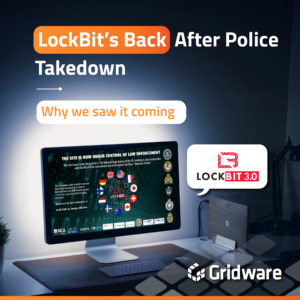It is time to look beyond the ASD Top 4, especially for those that have mastered those skills, and truly understand the significance behind the essential 8. In this, we will be taking you through different elements of the ASD top 8, discussing any changes and the potential impacts, as well as how to achieve baseline standards.
ASD Essential 8: What’s the same?
The underlying messaging and advice provided by the ASD is a constant between the Top 4 and Essential 8, meaning that the focus has largely remained very similar. With this, the main interest still circles around information security in order to provide larger safeguards for organisations, and protect future time and money from exposure.
Although there are many global foundations such as JSOX, SSAE, PCI, etc., the Essential 8 differs in that:
- It is prepared in a way to organisations manage potential risks that could be faced to their individual property. It is relevant and specific to their content.
- Gives a breakdown that helps an organisation understand the steps they need to take in the face of those risks, in a prioritised order.
- Represents a baseline for organisations to work towards and build from.
This is merely an evolution of the Top 4, but necessary to ensure that we remain on top of what it means to have good security measures in place. Those organisations that have undertaking the Top 4 approach, but haven’t grown past that into introducing more advanced security measures or have an ongoing, adaptable plan in place may have missed the mark. The Essential 8 acts as a friendly reminder you’re your security needs to keep evolving and improving.
What are the main changes in this?
As discussed, security does need to be constantly expanding and growing. With this, changes can be expected. When comparing the Top 4 to the Essential 8, we can see one larger change accompanied by some more minor changes.
Shifting Focus
The larger change that can be seen is a shift in the underlying focus, moving away from the Top 4 Strategies to Mitigate Targeted Cyber Solutions and evolving into the 8 Strategies to Mitigate Cyber Security Incidents. The reason for this can be seen when looking into the core reason behind the build. The Top 4 was essentially built to keep malicious threats at bay. In comparison, the Essential 8 understands that whilst much can be done to keep cyber trespassers out, there does need to be an adaptable designed element for when threats do make their way in.
What this means
Seeing the evolution between the Top 4 and the Essential 8 highlights a very valuable lesson, in that the ASD is proving that the best security is a journey that never truly ends. There should be an expectation that growth will be seen beyond the Essential 8 as we come to understand new forms of security, and new reasons for heightened security measures get introduced. What are your risks, and is your security flexible enough for when those threats become reality? These are just some of the many questions that are being posed in this update by ASD.
Position yourself for success by adding in flexibility and action plans into your security measures. A proactive instead of reactive approach is highly beneficial for any security plan.
When do I need to implement it by?
There shouldn’t be an end date to your security plan. Instead, you should be constantly adding layers as necessary to add more defence to potential threats as they also evolve. We can help you start the process however, and know how to help you build a comprehensive security approach for your organisations individual needs. Contact our team today to learn more about the elements that may be missing from your framework, and how to use the Essential 8 to overcome them.




